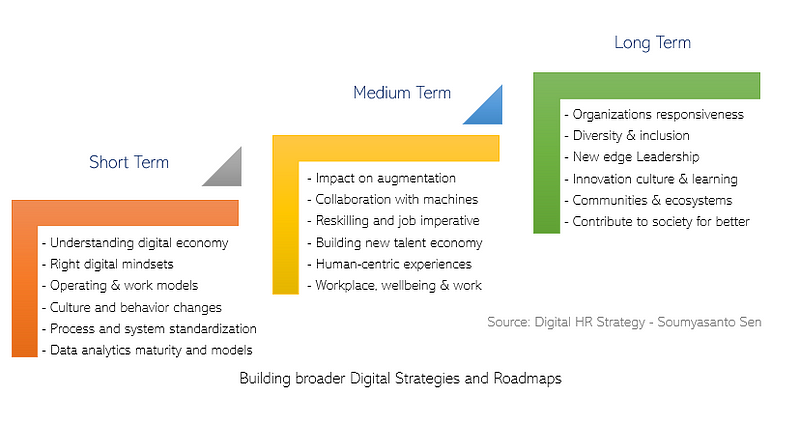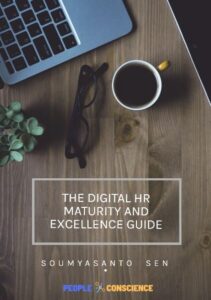Digital transformation is never easy. Our current uncertain world that is changing at a very high pace with an overload of information and the continual rise of technologies make it even more difficult. Organizations, therefore, need to continually evolve and change at the same speed. As such, they must change the usual ways of doing business, come out of their comfort zone, and get ready for new digital mindsets.
Despite all of this, 2 out of 3 digital transformation initiatives and programs don’t succeed. Many organizations are misunderstanding the transformation or, more precisely, the digital transformation based on their own perspectives. Organizational silos and bureaucracies are perhaps the biggest barriers for organizations aiming to harness the power of data and insights to ‘go digital’. On top of that, missing the right digital strategies is another reason why organizations struggle a lot when it comes to sustainability for the future.
Organizations should be very clear about the fact that investing in new technologies alone is not enough for a digital transformation. It is, in fact, a constant journey of re-alignment of business models, technologies and organizational culture to do business more effectively a digital age. Organizations obviously need to start with the basics; what is it that makes sense for them, and they always require a readiness assessment from short to long term. This means, among other things, revisiting their vision, their business strategy, and opportunities with new business models, workforce strategies, HR operating models, and technology along with their analytics maturity, their culture, and behaviors.

This readiness assessment helps them to build the right mix of strategies and approaches in a broader way, by going beyond conventional digital approaches, which are in fact not enough for sustainability. Along with this, they also need to build roadmaps for numerous phases in their upcoming journeys, which may change along the way and hence need to be reviewed timely.
Broader digital strategies and roadmaps
In order to reach the right level of sustainability, a digital strategy should be broader when considering the transformation journey in the digital age. This entails much more than just digitalizing current processes and buying digital solutions. The same is true for digital transformation in the HR space. HR digital transformation needs to be posed with the right journey phases, depending on the digital maturity of an organization. These phases can be divided into three, keeping short, medium and long-term benefits in mind and help to create the roadmaps accordingly.
Organizations need to start with a revolution phase targeting short term benefits. This phase is more about the understanding of the patterns of the changes based on the organization’s challenges. It’s also related to their workforces, and leading them to reach their desired future state by defining the right purpose together. The key to success here is not only having the right, new technologies, but also the right mindset so that they can explore a new world full of opportunities and get ready for their own journey of transformation.
During this transformation journey, organizations need to build strategies concurrently for short term benefits in the digital age:
- Understanding HR and digital transformation journeys in relation to the industrial revolution and the growing digital economy.
- Using the right digital mindset on operating models and work frameworks to induce business value for a people-centric transformation.
- Leveraging data and strategy the right way, together with culture and behavior changes for the ongoing transformation.
- Standardizing processes and systems for a positive business impact along with readiness for data analytics maturity and models.
Although most organizations are dealing with their short-term journey, implementing cloud systems, leveraging data, building analytics practices, and even changing organizational culture, this is not enough to become sustainable. Organizations also need a further survival trail in their transformation journey for medium-term benefits, considering the growth of intelligent technologies, a new world of work and a demand for a human-centric experience. So, there are always further strategies and roadmaps that need to be considered for the medium-term, even when organizations are already in their transformation journey, like:
- Preparing for the impact of augmentation, automation and intelligence systems on the organizations and workforces.
- Collaboration with machines by identifying processes, work activities, tasks and capabilities in the different workforce segments.
- Reskilling and redesigning jobs contemplating the future of work and with respect to the evolution of a new talent economy in the digital era.
- Focusing and balancing the entire experience and value proposition for the employee with future workplaces, wellbeing, job, technology, and a human touch.
Many organizations have already started touching various of these aspects in their journeys, but unless they are part of a bigger ecosystem, this is not an easy task. On top of that, a progressively competitive environment leads to challenges for organizations when they struggle to adapt to change and many organizations fail to create the state that can lead to sustainability in the long term. A right sustainable transformation can only be accomplished by framing a clear, sensible approach, strategy and collaboration. So for this journey phase, there is a need for necessary strategies and learning, considering the long-term benefits:
- Reinventing organizations from being machines to a living system and becoming responsive in order to emerge and sustain.
- Empowering innovation with the right diversity & inclusion, new edge leadership and inspiring culture within workforces.
- Supporting ecosystems that consist of more community-driven learning and enforcing social capital along with human capital.
- Developing a fairer society by contributing to sustainable developments.

Many of these aspects are not new, but they have never been fulfilled as they need a continuous, firm effort from all individuals, organizations, regulators, and education institutions within a community. For that, organizations must develop relevant strategies and roadmaps. It is very clear from these above-described phases that a digital HR strategy should not be the same as an IT or HRIT strategy and that it is also more than a people strategy. Instead, it should be much broader and bring all the important aspects needed for a sustainable digital HR transformation together.
It is not only crucial for all HR leaders, but also for the business leaders to understand the strategic approaches for a sustainable transformation for future organizations and workforces. This goes beyond the conventional digital propositions and rethinks the current way of working, practicing and, managing work, workforces and workplaces by collaborating with all the business functions, in this fast-changing digital era. Organizations won’t be able to achieve this if they continue to work in silos.
So, in most cases, this begins by identifying a specific business problem or new opportunity and depends on the organization’s digital business agility and its capacity to understand and react to digital threats and opportunities. Organizations must enable their leaders and workforces to embrace the change that comes with innovation, as that is the only remaining path to succeed. They’ll need to start building a value proposition from the opportunities. As readiness assessments help them to build better and broader digital strategies and roadmaps, similarly once they develop such frameworks, it helps them to build approaches that are sustainable for the future.
Organizational approaches to become sustainable
As mentioned above during the overview of the phases, many organizations have started to build the above strategies and roadmaps. Mostly as separate initiatives, in some cases by their HR organizations, and some from other business functions. But unless they can assimilate all this into their entire transformation journey and fit them into the journey phases and build roadmaps accordingly, it’s very difficult. And there is no doubt that without collaborating with each other, there is no success towards sustainability. From a longer perspective, this collaboration needs to happen within communities and ecosystems.
As the transformation in this digital age needs constant exploration, experimentation, and learning, individuals with a growth mindset can make a big difference; they are more likely to put in extra effort to learn and do things in new ways and own the resilience that helps them to overcome challenges. All of this must, of course, be managed in a proper way from the very beginning, as any change initiative is also depending on the culture and behavioral transformation of the organization and workforce. Most transformations start with a change in culture and behavior although this isn’t easy.
Organizations must focus on continuous, lifelong learning initiatives, investing in human capital and collaborating with machines. These are now becoming the key business imperatives for organizations, as well as an important contribution to society. The future workforce will need to be adaptable for lifelong learners because of the continuous need for reskilling. This helps them quickly put together the right resources to develop and update new and changing skills. All these need to be considered while developing approaches to become sustainable.
Everyone is unique and different. What works for one may not work for another. Across industries, organizations know that a “one-size-fits-all” approach doesn’t always hit the mark with their customers. Organizations need to ask more relevant questions to start with their own journey, as they need to build their own model and approach and these may vary from company to company. This should be a continuous process while exploring their transformation journeys, as nothing is set in stone today.
For further insights and details on this topic, stay tuned for Soumyasanto’s book ‘Digital HR Strategy — Achieving sustainable transformation in the digital age’ to be released in February 2020.
Originally published in AIHR Digital


